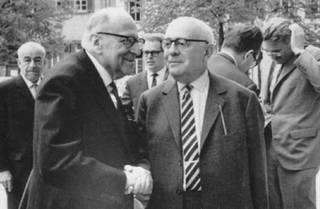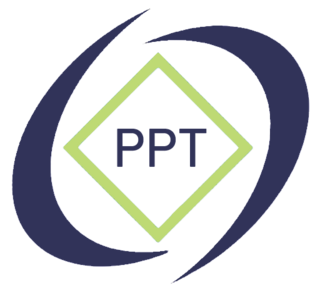Critical psychology is a perspective on psychology that draws extensively on critical theory. Critical psychology challenges the assumptions, theories and methods of mainstream psychology and attempts to apply psychological understandings in different ways.
Psychotherapy is the use of psychological methods, particularly when based on regular personal interaction, to help a person change behavior, increase happiness, and overcome problems. Psychotherapy aims to improve an individual's well-being and mental health, to resolve or mitigate troublesome behaviors, beliefs, compulsions, thoughts, or emotions, and to improve relationships and social skills. Numerous types of psychotherapy have been designed either for individual adults, families, or children and adolescents. Certain types of psychotherapy are considered evidence-based for treating some diagnosed mental disorders; other types have been criticized as pseudoscience.

Werner syndrome (WS) or Werner's syndrome, also known as "adult progeria", is a rare, autosomal recessive disorder which is characterized by the appearance of premature aging.

Small interfering RNA (siRNA), sometimes known as short interfering RNA or silencing RNA, is a class of double-stranded RNA at first non-coding RNA molecules, typically 20–24 base pairs in length, similar to miRNA, and operating within the RNA interference (RNAi) pathway. It interferes with the expression of specific genes with complementary nucleotide sequences by degrading mRNA after transcription, preventing translation. It was discovered in 1998, by Andrew Fire at Carnegie Institution for Science in Washington DC and Craig Mello at University of Massachusetts in Worcester.
Psychodrama is an action method, often used as a psychotherapy, in which clients use spontaneous dramatization, role playing, and dramatic self-presentation to investigate and gain insight into their lives. Developed by Jacob L. Moreno and his wife Zerka Toeman Moreno, psychodrama includes elements of theater, often conducted on a stage, or a space that serves as a stage area, where props can be used. A psychodrama therapy group, under the direction of a licensed psychodramatist, reenacts real-life, past situations, acting them out in present time. Participants then have the opportunity to evaluate their behavior, reflect on how the past incident is getting played out in the present and more deeply understand particular situations in their lives.
A double bind is a dilemma in communication in which an individual receives two or more reciprocally conflicting messages. In some scenarios this can be emotionally distressing, creating a situation in which a successful response to one message results in a failed response to the other, such that the person responding will automatically be perceived as in the wrong, no matter how they respond. This double bind prevents the person from either resolving the underlying dilemma or opting out of the situation.
Sex therapy is a therapeutic strategy for the improvement of sexual function and treatment of sexual dysfunction. This includes dysfunctions such as premature ejaculation and delayed ejaculation, erectile dysfunction, lack of sexual interest or arousal, and painful sex ; as well as problems imposed by atypical sexual interests (paraphilias), gender dysphoria, highly overactive libido or hypersexuality, a lack of sexual confidence, and recovering from sexual abuse ; and also includes sexual issues related to aging, illness, or disability.

The expressive therapies are the use of the creative arts as a form of therapy, including the distinct disciplines expressive arts therapy and the creative arts therapies. The expressive therapies are based on the assumption that people can heal through the various forms of creative expression. Expressive therapists share the belief that through creative expression and the tapping of the imagination, people can examine their body, feelings, emotions, and thought process.
Neuropharmacology is the study of how drugs affect function in the nervous system, and the neural mechanisms through which they influence behavior. There are two main branches of neuropharmacology: behavioral and molecular. Behavioral neuropharmacology focuses on the study of how drugs affect human behavior (neuropsychopharmacology), including the study of how drug dependence and addiction affect the human brain. Molecular neuropharmacology involves the study of neurons and their neurochemical interactions, with the overall goal of developing drugs that have beneficial effects on neurological function. Both of these fields are closely connected, since both are concerned with the interactions of neurotransmitters, neuropeptides, neurohormones, neuromodulators, enzymes, second messengers, co-transporters, ion channels, and receptor proteins in the central and peripheral nervous systems. Studying these interactions, researchers are developing drugs to treat many different neurological disorders, including pain, neurodegenerative diseases such as Parkinson's disease and Alzheimer's disease, psychological disorders, addiction, and many others.

Lifeworld may be conceived as a universe of what is self-evident or given, a world that subjects may experience together. The concept was popularized by Edmund Husserl, who emphasized its role as the ground of all knowledge in lived experience. It has its origin in biology and cultural Protestantism.

Relevance theory is a framework for understanding the interpretation of utterances. It was first proposed by Dan Sperber and Deirdre Wilson, and is used within cognitive linguistics and pragmatics. The theory was originally inspired by the work of Paul Grice and developed out of his ideas, but has since become a pragmatic framework in its own right. The seminal book, Relevance, was first published in 1986 and revised in 1995.

The Theory of Communicative Action is a two-volume 1981 book by the philosopher Jürgen Habermas, in which the author continues his project of finding a way to ground "the social sciences in a theory of language", which had been set out in On the Logic of the Social Sciences (1967). The two volumes are Reason and the Rationalization of Society, in which Habermas establishes a concept of communicative rationality, and Lifeworld and System: A Critique of Functionalist Reason, in which Habermas creates the two level concept of society and lays out the critical theory for modernity.
Media naturalness theory is also known as the psychobiological model. The theory was developed by Ned Kock and attempts to apply Darwinian evolutionary principles to suggest which types of computer-mediated communication will best fit innate human communication capabilities. Media naturalness theory argues that natural selection has resulted in face-to-face communication becoming the most effective way for two people to exchange information.
An auxiliary ego, also known as simply an auxiliary, is the position taken by other participants in a role-playing exercise, or psychodrama, in order to simulate particular situations for the protagonists. Additionally in psychodrama, it can also be a role of representative figures in the protagonist’s life assumed by any person between the group members on the stage, excluding the therapist. Another conceptualization describes it in psychodrama as "the representation of absentees, individuals, delusions, symbols, ideals, animals, and objects" that make the protagonist's world real and tangible.

Positive psychotherapy is a psychotherapeutic method developed by psychiatrist and psychotherapist Nossrat Peseschkian and his co-workers in Germany beginning in 1968. PPT is a form of humanistic psychodynamic psychotherapy and based on a positive conception of human nature. It is an integrative method that includes humanistic, systemic, psychodynamic, and cognitive-behavioral elements. As of 2024, there are centers and training available in twenty countries. It should not be confused with positive psychology.

In Germany, family law was one of the first areas to establish the thought of mediation, and still is the main field of application of mediation. Conflicts in Family Law are characterized by a high rate of personal conflicts. A possible definition of conflict might be:

Hans-Werner Gessmann was a German psychologist, founder of humanistic psychodrama and university teacher in Russia, India and Africa, one of the best known psychotherapists worldwide.
Victim mentality is a psychological concept referring to a mindset in which a person, or group of people, tends to recognize or consider themselves a victim of the negative actions of others. In some cases, those with a victim mentality have in fact been the victim of wrongdoing by others or have otherwise suffered misfortune through no fault of their own. The term is also used in reference to the tendency for blaming one's misfortunes on somebody else's misdeeds, which is also referred to as victimism.

A conflict is a situation, in which inacceptable differences in interests, expectations, values, and opinions occur in or between individuals or groups.
Peace psychology is a subfield of psychology and peace research that deals with the psychological aspects of peace, conflict, violence, and war. Peace psychology can be characterized by four interconnected pillars: (1) research, (2) education, (3) practice, and (4) advocacy. The first pillar, research, is documented most extensively in this article.









